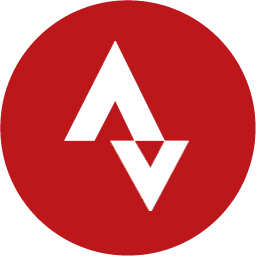The size of a ATV bike is a determining element in the choice of its future machine. But how to properly choose the size of your mountain bike? Frame geometry, inseam height, peripheral adjustment... nothing should be left to chance, as these elements condition comfort, ease of riding and performance. Our instruction manual guides you step by step to help you select the right size mountain bike.
Understanding the frame size system
The size of a mountain bike refers to the frame dimensions. These are expressed in inches, centimeters or letters (XS to XL) and represent the distance from the bottom bracket to the top of the seat tube. Note that each manufacturer has its own size guide that you should refer to.
For children's mountain bikes, wheel size is the reference measurement. As an example, the French Cycling Federation (FFV) shares the following information for trail mountain biking:
The French Cycling Federation (FFV) shares the following information
- 14 inches from 4 to 6 years old;
- 16 inches from 5 to 7 years old;
- 20 inches from 7 to 9 years;
- 24 inches from 9 to 12 years old.
Beyond the age, it is especially the size of the child that should be taken into account to select a suitable frame. Whether he is a teenager or a mini rider, it is important for your child to have a bike that fits him so that he can enjoy riding, and do so safely.
As for adults, it is important to have a frame that fits him
As for adults, smaller riders will go for an XS or S frame and taller riders for an L or XL frame. Note that there are mixed mountain bikes, such as men's mountain bikes and women's mountain bikes. Be sure to check the size chart posted, as sizes vary by gender.
Knowing your height in cm
So the first piece of information you need to have is your height in cm, or your child's height. If you don't know it precisely, measure yourself!
Are you in the store and don't have anything to measure yourself with? A quick trick is to ride the mountain bike frame with both feet on the ground. If you can slip two or three fingers between the top tube and the crotch, then the ATV is probably the right size. Nonetheless, it is still essential to verify the accuracy of the measurements described below to ensure you choose the proper geometry.
Measuring your inseam to choose your ATV size
There is another common measurement in the ATV size guides. It proves to be essential to properly choose the dimensions of your bike, especially the height of the frame. It is the height of the inseam.
Here are a few steps to follow to measure your inseam height:
- Go barefoot.
- Sit back against a wall, standing up straight.
- Spread your feet about 20 centimeters apart.
- Make sure your buttocks, heels and head are in contact with the wall.
- Insert a sufficiently rigid book between your thighs, glued to the perineum.
- Leave your position while keeping the book pressed firmly against the wall.
- Draw a pencil line just at the edge, then measure the distance from the floor to the marking with a tape measure.
All that's left to do is multiply this value by 0.59 to get the corresponding ATV frame size.
Calculating your ape index
Every mountain biker has different body proportions. Thus, there is another calculation formula to choose a mountain bike that fits your body type, especially if you fall between two sizes as a result of measuring your inseam.
The ape index (French for monkey index) gives the ratio of arm span to rider height to select an appropriate frame length. This distance between the handlebars and the seat tube should allow for a comfortable position, more or less extended depending on your mountain biking practice.
To get your ape index, simply subtract arm span in cm (i.e., the distance between the ends of your spread arms) from your height in cm. If the result is greater than zero, choose the size above. Otherwise, the one below. To your calculators!
This is still to be qualified, however, depending on the discipline practiced. In all mountain or touring mountain biking, opting for the lower size can sometimes be wise. Due to the more raised back position, you will observe a gain in comfort and riding. Conversely, the size above will maximize performance and pedaling.
Adjusting your position on the mountain bike
Choosing the size of your mountain bike also means adopting the right position on your bike. So don't forget to adjust your peripherals:
- seat height;
- saddle height;
- handlebar height;
- handlebar width;
- stem length;
Once all these adjustments are made, you can finally enjoy your mountain bike rides to the fullest, without discomfort or pain!
Do a postural study
While the postural study is particularly popular in road cycling, mountain bikers also find it interesting. Indeed, it represents the best way to determine the perfect position on the mountain bike, i.e., the one that will guarantee you optimal comfort. In addition, being ideally positioned on your machine reduces the risk of injury.
Often reserved for riders wishing to progress in the discipline, this ergonomic analysis is not essential to finding a mountain bike frame that fits properly.
Now that you know how to size your bike, it's time to choose the right mountain bike for your riding, as well as your pair of mountain bike tires. So, will you opt for a full-suspension or semi-rigid mountain bike?





